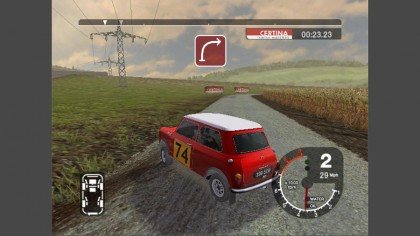How does the ultimate PC of 10 years ago compare to the best today?
Don't laugh: this used to be the bleeding-edge
As for the rest of a 2005 PC, 512MB of RAM was still considered ample for most purposes. Then technical showpiece Doom 3 requested it, but would tolerate 256MB. It wasn't long before that began rising though, most notably with the horror FPS F.E.A.R in that year recommending 1GB of RAM (along with a 256MB 3D card and a Pentium 4 3.0GHz processor – high, high specs at the time).
Even so, it's only this year that we're really starting to see games asking for more than 4GB – our old friend The Witcher 3 for instance demanding a minimum of 6GB and ideally wanting 8GB to play with. Cue an upgrade even for many hardcore fans.
The reason for this is that in 2005, and the next decade, developers had to work on the assumption that gamers would be running a 32-bit operating system like Windows XP. In 32-bit, it's ordinarily (though not always) impossible to use even 4GB to its full, never mind anything more.
It's only now that 64-bit is well enough embedded for companies to expect it, with even most high-end PC games still slumming it as 32-bit apps. Last year's Dragon Age Inquisition was one of the first major mainstream games to finally cut that cord. Regular, albeit typically professional-grade applications, have been quicker off the mark, but not by much. Adobe's Premiere Pro CC? 64-bit only. The consumer Premiere Elements? Installs a 32-bit version as needed.

From the past to the future
So what can we say of our plucky PC from 2005? It's certainly less of a jump from it to today than you'd see from 1995 to 2005. Not only did that take us from the death-throes of DOS to a world where most folks would never even need to know that CD stood for 'change directory', that was a period where bulky CRTs were consigned to history in favour of flat LCDs, when 3D graphics grew up and took over the gaming world, and of course, when internet access finished its shift from modems to broadband for at least most lucky souls.
As for the next 10 years? Who can say. While the PC of 2025 will inevitably be far more powerful and capable of wonders we've yet to fully appreciate (in much the same way that good looking games in 2005 looked near photo-realistic but now look like crayon scribbles), it seems unlikely that its basics will be radically different.
Popular as phones and tablets and at least some of the ideas behind technologies like VR, Google Glass and HoloLens are, the good old monitor, keyboard, mouse and tower still have plenty of life left in them.
Are you a pro? Subscribe to our newsletter
Sign up to the TechRadar Pro newsletter to get all the top news, opinion, features and guidance your business needs to succeed!
That said, it's impossible to predict with any real certainty. Luckily, being surprised is always part of the fun.
- Check out what else is going on during PC Gaming Week